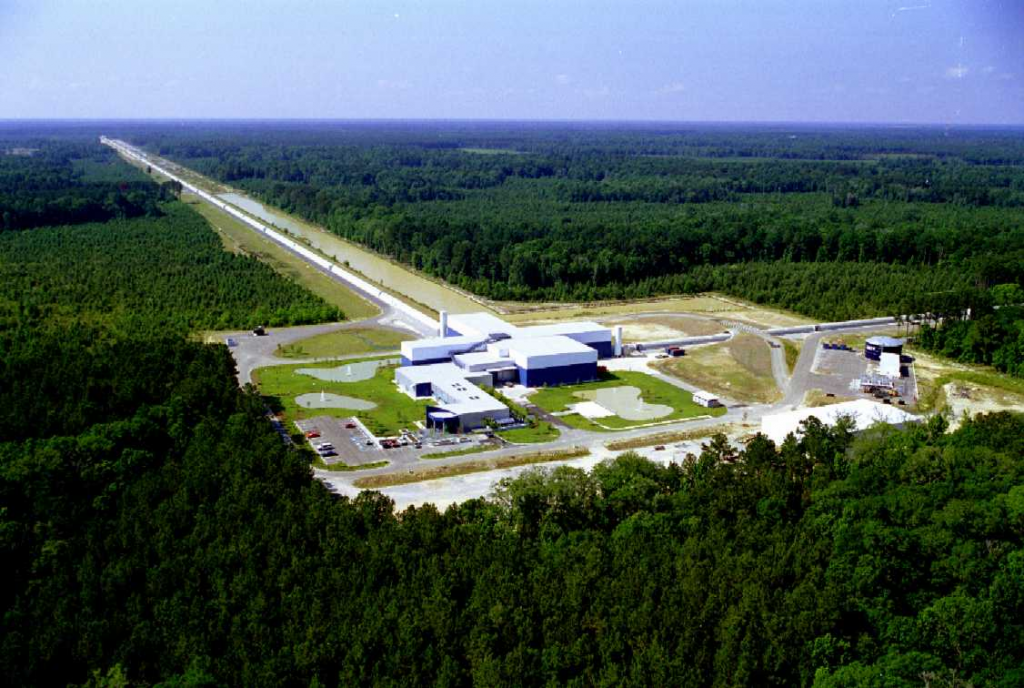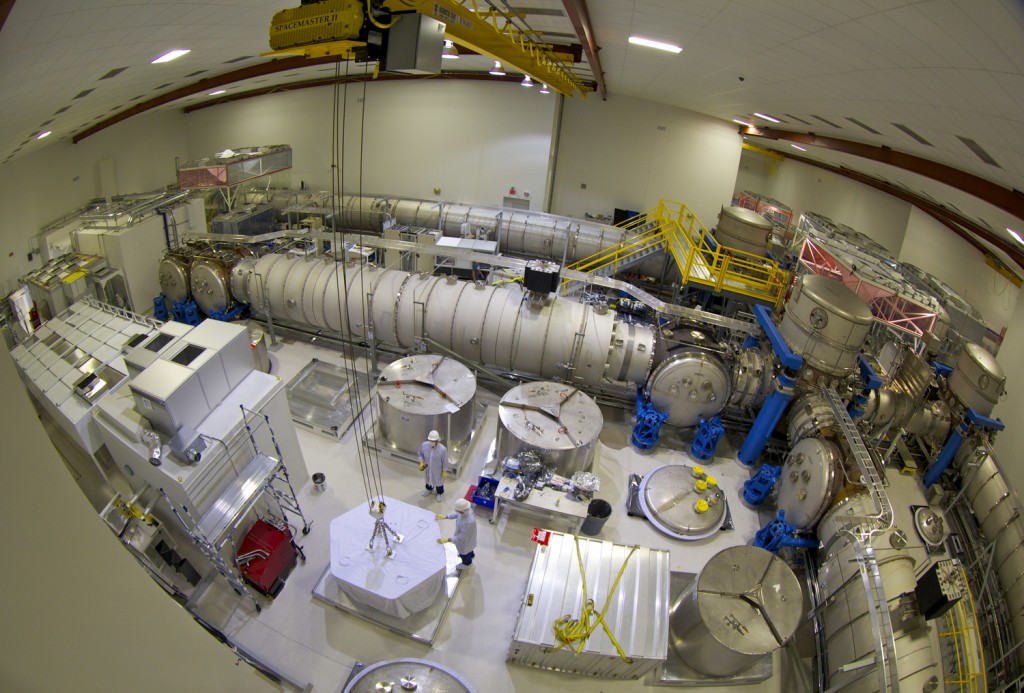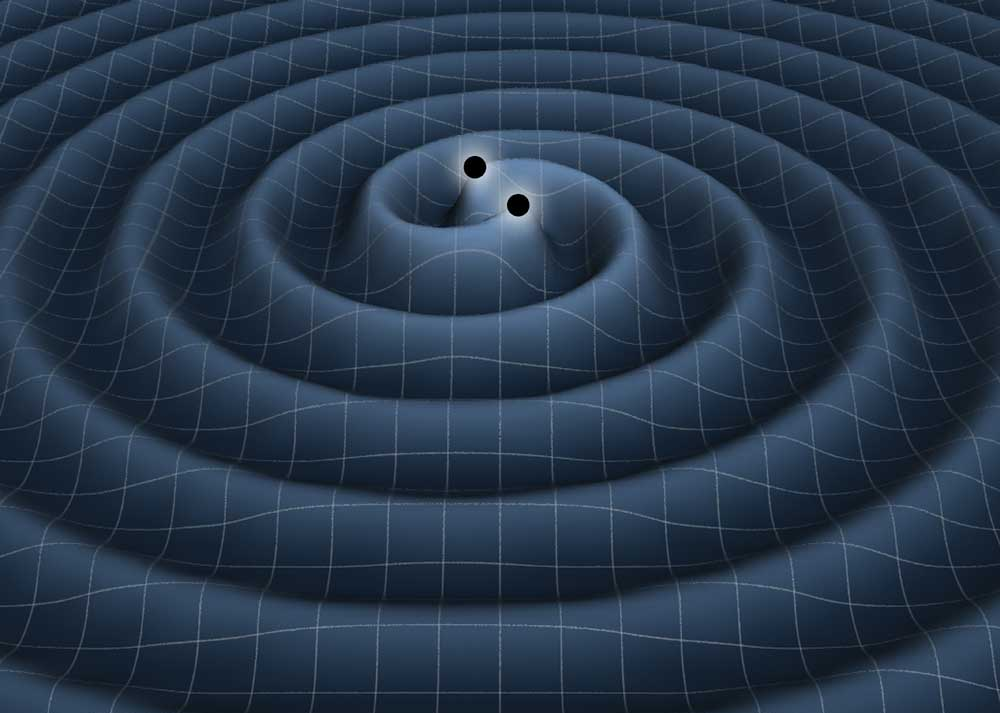11 February: Scientists to provide update on the search for gravitational waves
Press Release Documents regarding the detection,
English, Hindi, Marathi, Bangla
The translations in the various Indian languages and their proofreading were done by Karan Jani, Anuradha Gupta (Hindi); Nairwita Mazumder, Arunava Mukherjee, Archisman Ghosh, Anirban Ain (Bengali); Haris, Saleem, K. G. Arun (Malayalam), Bhooshan Gadre, Archana Pai (Marathi), Satya Mohapatra (Odia). We are working on posting other translations asap. If you contributed to one of the above translations but do not see your name in the credits, please email us. Thank you.
Media Advisory
A 100 years after Einstein predicted the existence of gravitational waves, Indian scientists are joining researchers around the world to update the scientific community on efforts to detect them.
(IUCAA, Pune) — Journalists are invited to join the IndIGO Consortium (Indian Initiative in Gravitational-wave Observations) as it brings together the scientists from across the country this Thursday (11/2/2016) at 8:00 pm. at the Inter University Centre for Astronomy and Astrophysics, Pune for a status report on the global quest over decades to detect gravitational waves – or ripples in the fabric of spacetime – using the Laser Interferometer Gravitational-wave Observatory (LIGO); the involvement of Indian researchers in the quest at present and the future possibilities it presents to India.
LIGO, a system of two identical detectors carefully constructed to detect incredibly tiny vibrations from passing gravitational waves, was conceived and built by Massachusetts Institute of Technology (MIT) and Caltech researchers, funded by the U.S. National Science Foundation, with significant contributions from other U.S. and international partners. The twin detectors are located in Livingston, Louisiana, and Hanford, Washington. Research and analysis of data from the detectors is carried out by a global group of scientists, including the LIGO Scientific Collaboration (LSC), which includes several Indian scientists. There is a proposal to build a LIGO- like detector India, which can greatly enhance the capabilities of this network.
Press members will also have an opportunity for detailed interactions with the Indian scientists in the consortium on Friday, 12 February from 10 am onwards.
For additional background about the project, you may be interested in these websites:
Material for press: http://www.gw.iucaa.in/press
IndIGO consortium: http://gw-indigo.org
LIGO Lab: https://ligo.caltech.edu
LIGO Scientific Collaboration: http://www.ligo.org
Schedule :
Feb. 11, Thursday, 2016
8:00 pm – 9:00 pm: Introduction to Indian team, Introduction to LIGO & Gravitational Waves
9:10 pm – 9:30 pm: Live Stream from Washington DC
9:30 pm – 10:30 pm: Interaction with Indian Scientists and Q&A
(Dinner will be served at 7:00 pm)
WHERE:
Chandrashekhar Auditorium
Inter University Centre for Astronomy and Astrophysics (IUCAA) Savitribai Phule Pune University Campus
Ganeshkhind, Pune 411007
MEDIA CONTACTS:
Tarun Souradeep ( tarun@iucaa.in ) +91 9422644463
Varun Bhalerao (varunb@iucaa.in ) +91 9850005899
Samir Dhurde ( samir@iucaa.in ) +91 9422366819

LIGO has two identical detectors: one in Livingston and other in Hanford, Washington, USA. This is the Livingston site detector with the central building joining two 4 kilometer arms. (Credit: Caltech/MIT/LIGO Lab)

The inside view of the corner station of LIGO Hanford detector. This is the laser and vacuum equipment area that houses pre-stabilized laser, beam splitter, input test masses, and other equipments.

A photo of one of the LIGO’s mirrors

Artist’s impression of two black holes orbiting each other and producing gravitational waves. As described by Einstein’s general theory of relativity, gravitational waves propagate as ripples in the fabric of space-time which can be visualized in this picture.
A nice video by PHD Comics in their youtube channel explaining what are gravitational waves
The animation showing how an interferometer inside LIGO detectors operates to detect GWs
An interferometer is a device which uses the concept of light wave interference to measure a change in distance. The incoming laser beam is divided into two beams, using a ‘beam-splitter’ (e.g. a half polished glass which reflects some light and transmits the rest) and sent out to two long tubes which are perpendicular to each other and have the same length. The two beams reflect back from the end mirrors and meet at the beam-splitter again. The two light waves combine in such a way that they cancel each other out (since both have traveled through equal length) and hence no light is detected at the output. However, when a gravitational wave is incident on the interferometer, it changes the distance between the mirrors. One arm becomes a little longer than the other, and an instance later they switch, i.e., the shorter arm now becomes the longer one. This periodic stretching and squeezing of the arms continues until the gravitational wave has passed. Due to the difference in the distances traveled by the light in both arms, we get a periodic change in the intensity of the light coming from the detector. By looking at the output of such a sensitive interferometer, we can tell whether a gravitational wave has passed through it.
Artistic impression depicting the merger of two white dwarfs and producing gravitational waves
Here we are looking at two white dwarfs orbiting each other. These are producing GWs just like an accelerated charged particle generates electromagnetic waves (e.g., light). The two white dwarfs come closer and closer by emitting their orbital energy in the form of gravitational waves of increasingly higher amplitude and frequency. Finally, the white dwarfs merge igniting the fireworks of a Type Ia supernova.
An interesting video to show the effect of passing gravitational waves. The video is created with the help of a software developed by LASER LABS
As predicted by Einstein, gravitational waves are ripples in the fabric of space-time which come with two polarizations: plus and cross. The `plus’ and `cross’ polarisations can be combined to create more complicated patterns like elliptical or circular polarisations. Therefore, when gravitational waves passes through the space-time around us, it stretches and squeezes it. What you are seeing is the oscillating Einstein at IUCAA in the field of plus polarized, cross polarized and circularly polarized gravitational waves (Courtesy: University of Birmingham, see www.laserlabs.org).
